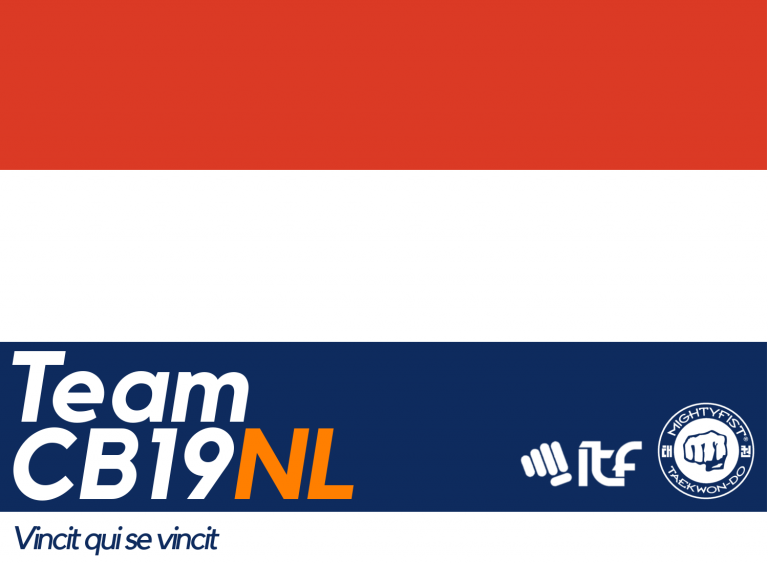ITF Patterns Unleashed: Movement is Key
AMSTERDAM, 07.10.2020 – It’s always a pleasure to catch up with my friend Master Thierry Meyour, and training with him (online) via ITF Patterns Unleashed means 45 minutes of instant pragmatic insight into the fundamentals of movement. We had a really interesting discussion during yesterday’s session that stuck in my mind: how to solve the “form vs function”-paradox in ITF Taekwon-Do? Read my thoughts on that question, let me know what you think.
Form vs. Function
For those who haven’t been following our posts: our club Taekwon-Do School Amsterdam focuses more on the self-defense side of Taekwon-Do than most other clubs (in the world). So for us, the ITF patterns (or “forms”) are a toolbox with close-quarter fighting tools. Of course, violence dynamics have changed since the old days. So we put everything to the test and see if it still holds up when you’re attacked aggressively and under stress. We find out which techniques sound good in theory but are not working in reality (not all “practical applications” are practical off-the-shelve). It also helps that we train in the Kalah Combat System. This reality-based system is all about surviving modern-day violence. We found out a lot of useful applications in our patterns by reverse-engineering Kalah techniques, and also from MMA, which is the latest evolution in combat sports.
The main view on pattern performance in the ITF world is “you block attacks and throw in strikes of your own”. From a “practical (self-defense) application”-point of view, there’s no blocking, just grabbing and striking (and parrying, and even throwing). The two perspectives result in very different interpretations of the patterns, performance-wise. The first tends to be more about formalized aesthetics (it has to look fluid, and powerful, according to a certain standard, preserving certain traditions), the latter is more concerned with tactics that work (and keep working); the looks of it are not a goal in itself. And of course, there are interpretations in between.
ITF Patterns Unleashed: Movement is Key
So can you bring “form” and “function” together? In short: a “function”-based practitioner will have a tougher time than a “form”-based practitioner in winning the (form-based) world championships. It’s like a diet: if your goal is to gain muscle, your diet looks different than if your goal is to lose weight. And the results don’t look the same at all, although food is still food. Master Thierry made the analogy between drinking tea because you’re thirsty or doing a Japanese tea ceremony. But Master Thierry is focused on something more fundamental: movement. The method that is promoted through ITF Patterns Unleashed is built around synchronizing the mind and the body. You basically increase your body-consciousness with every tip he gives. And that translates INSTANTLY into a more fluid, efficient, and more powerful way of moving. And what works in patterns in this case, also works for striking, as we experienced in the personal training sessions and the MMA class that evening: the beginners who had trouble getting in power shots suddenly had no issues landing tight, hard, short hooks for example. It sounds simple enough… First, learn how to move, then the rest will follow. In this sense, you could view the patterns as a body of movement principles.
Martial Core of ITF Taekwon-Do
In our view, Taekwon-Do consists of three main bodies: the martial/self-defense aspects (patterns when seen as a toolbox for close-quarter combat, and actual self-defense), combat sports (competition fighting), and the “athletics/gymnastics” disciplines (e.g. jumping kicks, power breaking, all variations of choreographed fights – and in a sense the competition-oriented performance of patterns). Just to be clear: we’re not saying a movement can’t be efficient if it’s to create maximum power in an elegant way. The difference lies in the underlying goals. The goal of perfect body control is simply different from the goal of taking a threat out quickly. In the formative years of Taekwon-Do, it was solely based on the Japanese version of Karate, popularized by Funakoshi, who was already drifting away from the actual self-defense content of the Kata (karate forms/patterns). You could state that the “martial” core of Taekwon-Do was never really there from the beginning, despite its militaristic origins.
So a dilemma arises. What do we teach in the training of patterns? Perfect form or efficient function? Are we still doing ITF Taekwon-Do with our take on the patterns (which lie at the heart of what makes “ITF Taekwon-Do”)? To be honest: I love the passionate and informed way Master Thierry studies movement. It feels good (the joy of movement!) and it does wonders for the way the techniques look and generate power. No wonder he has delivered top competitors over the years. But I also love the fact that my students at least have an idea of how all those moves from the patterns have some real application in a self-defense context. And it is not the actual moves per se, but the tactical principles that underpin them. For example, the controlling of limbs is there in the patterns (mostly with the hand), but we don’t think that’s very effective, so when we train, we adapt them to controls that work better. The striking though – by the way, all those blocks are strikes – works perfectly. That “palmok” (underarm) is a human baseball bat, as Sabum Roy Rolstad (from ITF Radix) calls it. On a side note: nobody knows exactly what the original applications for those techniques were, as not many written sources survived from those days (or were even produced).
A Real Paradox?
Form vs Function: is it a real paradox? Or is “form” actually a way to rewire your brain, get your neural pathways geared up for better movement, which will serve both “form” and “function”? Whatever your take on Taekwon-Do, whether it be as a sport, a “traditional martial art”, a way to preserve everything General Choi has ever said and written down, or as a vehicle for self-defense purposes, or something else: to keep a martial art relevant, you have to keep it relevant. Find a new edge, or completely shift the paradigm. You have to be willing to put it to the test. Improve upon the body of work others have produced. Whether you’re experimenting with movement to make the patterns more powerful and graceful or turn the moves into tools to survive violent encounters: when the newest combat sport or self-defense method comes along, and all your students think your stuff is obsolete, you’re way behind the curve.
Want to get familiar with the method of Master Thierry Meyour’s ITF Patterns Unleashed? He will host an online seminar on October 10th, 2020. Grab your ticket here!








